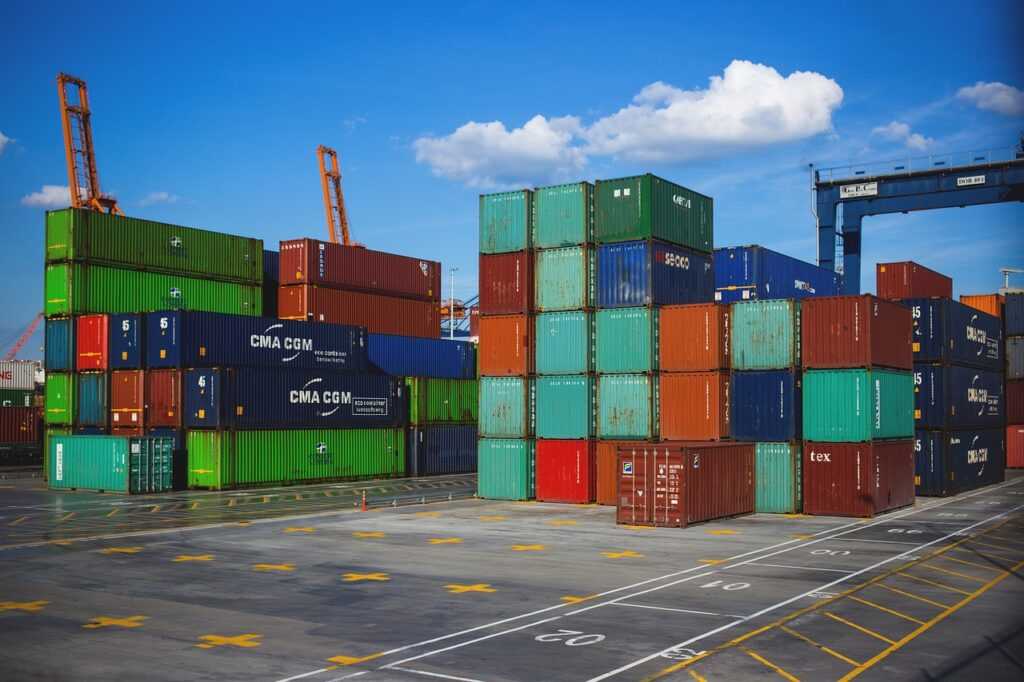Understanding Trade Tariffs
Trade tariffs are essential tools in global trade that affect multiple aspects of global markets. To comprehend their significance, examining their definition and historical context is key.
Definition and Types
Trade tariffs are taxes imposed by a government on imported goods. These taxes aim to increase the cost of foreign products, making domestic alternatives more attractive.
There are several types of tariffs, including:
- Ad Valorem Tariffs: Calculated as a percentage of the item’s value. For example, a 10% tariff on a $100 item means an additional $10 cost.
- Specific Tariffs: A fixed fee per unit, such as $2 per kilogram of imported cheese.
- Compound Tariffs: A combination of ad valorem and specific tariffs. For instance, a 5% ad valorem tariff plus $1 per unit.
Historical Overview
Historically, trade tariffs have played a pivotal role in shaping international economics. In the 19th century, tariffs protected fledgling industries in the US and Europe.
During the Great Depression, the US enacted the Smoot-Hawley Tariff Act in 1930. This act raised tariffs on thousands of goods, leading to decreased global trade and worsening economic conditions.
After World War II, countries shifted towards reducing tariffs to encourage trade. The General Agreement on Tariffs and Trade (GATT), established in 1947, aimed to lower tariffs and other trade barriers.
This movement led to the creation of the World Trade Organization (WTO) in 1995, which continues to oversee global trade agreements and tariff reductions.
Understanding the evolution of trade tariffs helps in grasping their ongoing influence on today’s global trade dynamics.
The Impact of Tariffs on Domestic Markets
Trade tariffs significantly affect domestic markets by altering prices and influencing production decisions for local businesses.
Effects on Prices and Production
Tariffs cause prices of imported goods to rise, making domestic products more competitive. For instance, if tariffs are placed on imported steel, the cost of foreign steel increases.
Consequently, local manufacturers may prefer sourcing steel domestically. This shift often leads to increased production within the country, but it can also result in higher consumer prices if domestic supply doesn’t meet demand.
The automotive industry, for example, is one where tariffs on foreign components can lead to increased production costs, which are then passed on to consumers through higher car prices.
Response from Local Businesses
Local businesses often adjust their strategies in response to tariffs. Some may increase production to capitalize on reduced foreign competition.
For example, a textile company may ramp up operations if tariffs are imposed on imported fabrics. However, this isn’t always beneficial. If tariffs affect essential imported inputs needed for production, businesses may face higher costs, which can squeeze profit margins.
A study by the National Institute for Economic Application showed that 45% of small manufacturers reported increased costs due to tariffs on imported raw materials.
Domestic companies also seek alternative supply chains to mitigate tariff impacts. For example, they might source products from countries with favorable trade agreements.
This strategic shift helps businesses maintain competitive pricing. Moreover, lobbying efforts often increase, with companies pushing for favorable trade policies to lower operational costs.
These responses highlight how deeply tariffs influence domestic market dynamics, affecting both consumer prices and business strategies.
Global Trade Dynamics and Tariffs

Understanding global trade dynamics requires examining the role and impact of tariffs.
Case Studies of Trade Wars
Trade wars offer tangible insights into the effects of tariffs. One notable example is the US-China trade war. In 2018, the US imposed tariffs on Chinese goods worth $250 billion, leading China to retaliate with tariffs on $110 billion of US goods.
This escalation disrupted global supply chains, shifted production bases, and increased costs for businesses and consumers.
Another case is the EU-US steel and aluminum tariffs. The US introduced tariffs on steel (25%) and aluminum (10%) imports from the EU in 2018, citing national security concerns.
The EU responded with tariffs on US goods, targeting products like bourbon, motorcycles, and jeans. These actions strained relationships and altered trade flows.
Influence on Global Supply Chains
- Tariffs significantly affect global supply chains. Increased import costs force companies to re-evaluate sourcing strategies.
- Manufacturers might shift production to countries with lower tariffs or domestic suppliers.
- The automotive industry exemplifies this. US tariffs on steel and aluminum led car manufacturers to seek alternative suppliers or absorb higher costs, impacting car prices and profit margins.
- In the electronics sector, tariffs on Chinese components prompted firms to diversify manufacturing bases to countries like Vietnam and India.
- Given these dynamic shifts, understanding tariffs’ impact on global supply chains is essential for strategic planning in international trade.
Policy Responses and Economic Implications
Governments often deploy various strategies to handle the complex ramifications of trade tariffs. These strategies include retaliatory tariffs, negotiations, and trade agreements to mitigate negative impacts on their economies.
Governmental Strategies in Handling Tariffs
Retaliatory tariffs remain a common governmental response when a country imposes tariffs on another nation’s goods.
For instance, when the US imposed tariffs on Chinese products, China responded with its own set of tariffs on American imports. Such measures aim to balance trade disparities but often escalate trade tensions.
Negotiations play a vital role in resolving tariff disputes. Governments engage in bilateral or multilateral talks to reach mutually beneficial trade agreements.
These discussions also facilitate the reduction or elimination of tariffs, as seen in the renegotiation of NAFTA into the USMCA.
Trade agreements can cushion the blow of tariffs on global markets. By entering into free trade agreements (FTAs) or regional trade blocks, countries can reduce the likelihood of future tariff impositions.
The European Union’s FTAs with countries like Japan and Canada highlight effective strategies for maintaining open trade channels amidst global tariff challenges.
Long-term Economic Effects
Trade tariffs, though often implemented to protect domestic industries, can lead to notable long-term economic effects. Increased production costs for businesses relying on imported raw materials often result in higher consumer prices.
In the automotive industry, tariffs on steel and aluminum can drive up vehicle prices, affecting consumer demand.
Shifts in global supply chains become evident as companies seek ways to avoid tariff costs. Businesses may relocate production facilities to countries not subject to the tariffs, impacting employment and investment in the original countries.
Electronics manufacturers, facing tariffs on components, may move production to Southeast Asia to reduce costs.
Trade relationships can undergo fundamental transformations due to prolonged tariff disputes. Countries might seek new trading partners or strengthen existing alliances, potentially leading to shifts in global trade patterns.
The US-China trade war prompted China to increase trade with European and African countries, altering traditional trade dynamics.
Understanding these long-term economic effects helps businesses and policymakers develop strategies to navigate the complexities of the global market influenced by trade tariffs.




